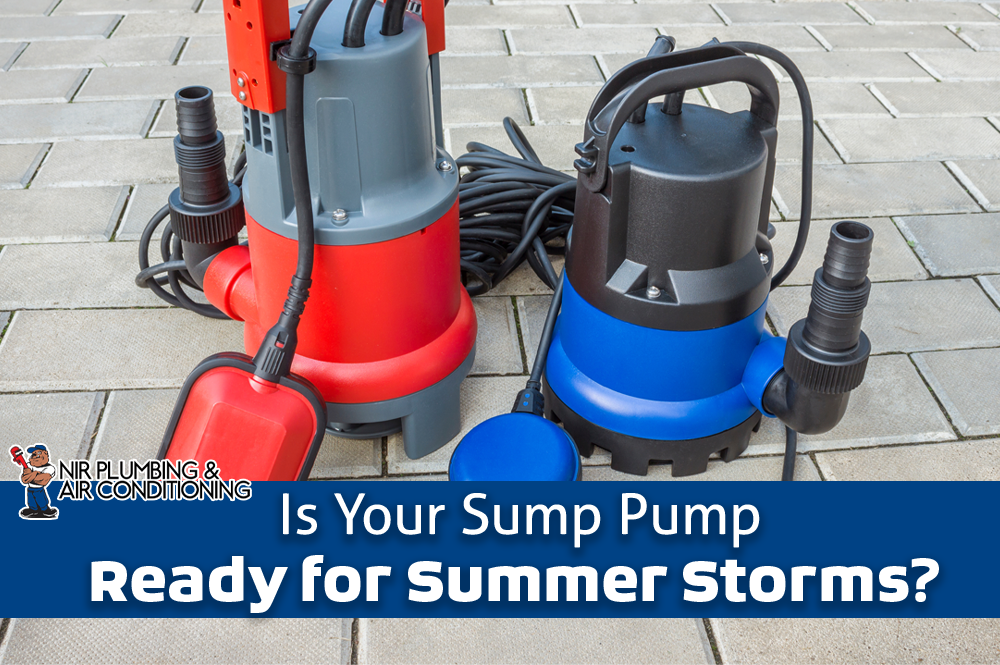[vc_row][vc_column width=”1/1″][vc_column_text]
Overview: A sump pump is all you need to keep your house moist-free, dry and airy amid summer storms
You’ve made it through the winter and spring and now it’s time to focus on what summer brings for us. With warm breezes and rising temperatures, those who experience summer storms need to prepare their sump pump.[/vc_column_text][ultimate_heading main_heading=”What is a Sump Pump?” alignment=”left” margin_design_tab_text=””][/ultimate_heading][vc_column_text]
Sump pumps aren’t available in every area – as they’re mainly prevalent where storms hit. It’s usually installed in the basement of your home and is part of the plumbing. It’s used to “pump” or remove excess water out of your house and into another area, such as a storm drain. Often, they’re installed under the floor of your basement, although “pedestal pumps” do sit above your sump basin.
>> Recommended Reading: Buying a Home with a Sump Pump? Here are 10 Things You Need to Know
The sump pump might malfunction or stop working, and humidity might start building up inside the house. To make your sump pump work, make sure that your home has a sump pit, or a hole in your basement which extracts the water out to keep the surface safe. You can read more about sump pump functions here.
So how can you ensure that your sump pump is ready for summer storms? The following sump pump tips can help you with easier plumbing maintenance when a summer storm hits.[/vc_column_text][ultimate_heading main_heading=”Inspect and Clean Your Sump Pump:” alignment=”left” margin_design_tab_text=””][/ultimate_heading][vc_column_text]
If you’re a handy homeowner or an occasional plumber, giving your sump pump, a tune-up will add a few more years to its life to ensure that it runs a little smoother than before. Before starting the sump pump, turn off the electricity to the pump – read the manual, and remove it from the basin.
Clean the dirt and see if it has sediment or small stones. You might be familiar with cleaning, but model-specific instructions are always helpful. Take the help of a stiff-bristle brush or paper towels to clean the inlet screen. Also, lubricate bearings if needed – remove debris and dirt from the basin and reinstall.[/vc_column_text][ultimate_heading main_heading=”Test the Sump Pump Out:” alignment=”left” margin_design_tab_text=””][/ultimate_heading][vc_column_text]
To make sure that your sump pump will do its duty to keep the basement dry and does what it’s supposed to do, run a simple test. Open the lid and pour a generous amount of water for the float to move upward. A good working pump will immediately begin pumping the water out of your home.
If it’s still not working, you can always reach out to a professional plumber for further assistance and a free demo.[/vc_column_text][ultimate_heading main_heading=”Make Sure Your Sump Pump is Powered:” alignment=”left” margin_design_tab_text=””][/ultimate_heading][vc_column_text]Since the sump pump needs electricity to run, make sure that the power of the outlet a sump pump is plugged into – is on. In case of issues with the outlet, call an electrician to find out what’s happening.[/vc_column_text][ultimate_heading main_heading=”Look for Signs of Rust and Corrosion:” alignment=”left” margin_design_tab_text=””][/ultimate_heading][vc_column_text]
Although sump pumps are built to last, nothing lasts forever (not even the best sump pump). A well-cared-for sump pump lasts about a decade – even longer if you’re paying attention to it and treating it well. When examining your sump pump for the signs of corrosion or rust and finding some, they don’t indicate replacing the pump. If you’re following the tips mentioned above and it starts working fine, save your bucks and repair instead of complete replacement
[/vc_column_text][ultimate_heading main_heading=”Examine Your Sump Pump Regularly:” alignment=”left” margin_design_tab_text=””][/ultimate_heading][vc_column_text]After thoroughly investigating your sump pump, keeping it in check throughout the summer is essential. Check it after the news of storm breaks in (to see if it’s ready) and after the heavy storm rolls in (to see if that worked well). By keeping a regular eye on such stuff, you’ll be free from any unpleasant surprises.[/vc_column_text][ultimate_heading main_heading=”Other Ways to Ensure that Your Sump Pump is Ready for Summer:” alignment=”left” margin_design_tab_text=””][/ultimate_heading][vc_column_text]
Similar to other appliances in your home, sump pumps are naturally prone to malfunction. Although they’re built to last, that doesn’t make them indestructible. Here are a few signs to diagnose the ailment.
-
Constant vibration while operating.
-
There’s a noticeable amount of rust along.
-
It doesn’t turn on (check the socket first)
-
There’s a clog.
-
The sump pump is incredibly noisy.
-
Either it doesn’t start or doesn’t stop.
[/vc_column_text][ultimate_heading main_heading=”In Summary: ” alignment=”left” margin_design_tab_text=””][/ultimate_heading][vc_column_text]You may not deem the sump pump as an essential factor, but it helps reduce the humidity of the house, keep homes dry and summer-friendly for you and your loved ones. Feel free to contact us at (951) 300-6681 or drop a message for assistance.[/vc_column_text][/vc_column][/vc_row]


